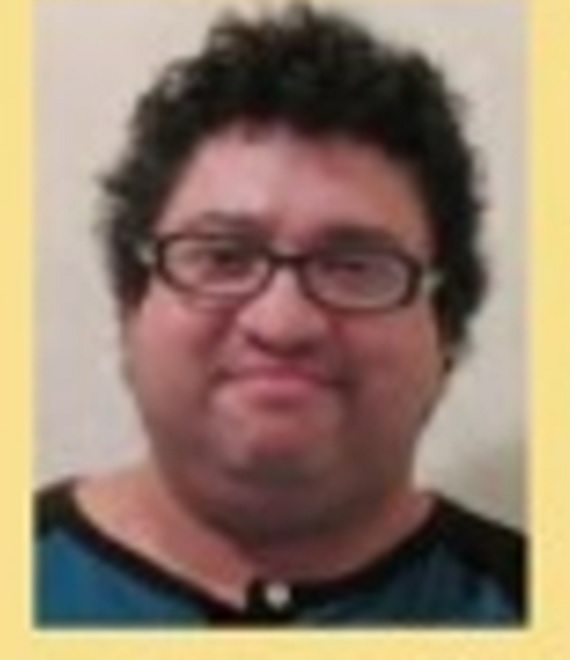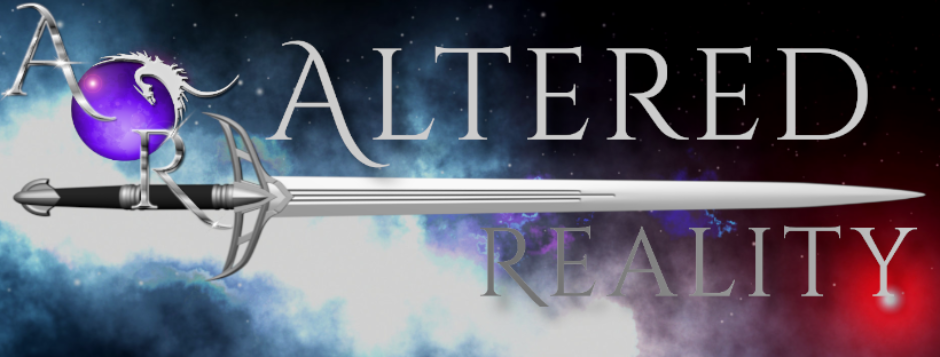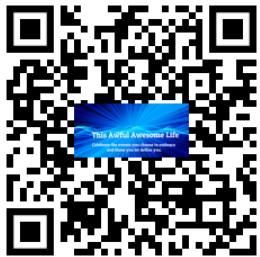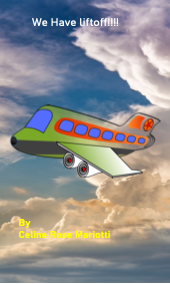The woman-like thing was translucent, shimmering in the sunlight like a diaphanous sheet of water. No one around me could see her, but I could. I developed very keen observational skills staring through microscopes in Dr. Drost’s lab, identifying different strains of viruses, marking mutations by the differences in the shape of filaments, protein shells/capsids, and membrane thicknesses. This I could do by sight. A rare gift, useful for the scientific discovery of the minutiae Dr. Drost could use in his research papers. My name was tacked onto the end of a long list of contributors who’d do his research while he drank expensive scotch and cheated on his wife. It was a job. Three years’ worth of observations furthering the career of a man who didn’t care one way or the other about science. Like me, he just had a job.
I sat on a bench watching as the nearly invisible girl drifted this way and that, buffeted by the breezes of passing humanity. She wouldn’t bump into anyone. Her immaterial shape sort of slid around the solid bodies of humans, the solid shapes of flowerpots, and art in the small plaza next to my office building where I’d sit and eat lunch every day. Sometimes I lost sight of her, losing the knack of seeing her near invisibility for a few seconds.After a while, she just disappeared. I’d tried to take a picture of her on my phone, but all I got was a fat guy in a shirt much too small to cover his ponderous bulk as he walked by me, smiling at what he thought was my flirtatious attention. My phone’s camera couldn’t capture her form.
***
Most days, she was around at my lunch hour. At first, I wasn’t sure if she was male or female. Once I’d decided I wasn’t hallucinating, I tried to identify characteristics that marked her as an organism. Her shape, her outline was humanoid. The head was an oval atop a long neck, shoulders sloped outward and down to appendages that were clearly arms. There was a torso, a discernable waist, legs, and at the bottom, feet (I couldn’t make out toes or fingers). In her face, there seemed to be indentations where eyes, a nose, and a mouth were on a human. I couldn’t detect hair or some other outer covering like clothing, but in one gesture, I marked her as female. Obviously, there was no scientific basis for this guess, giving her gender made me think of her more clearly and I made a decision: she was female.
One day, she stopped drifting for a second. A few weeks after my finding her, she stood firmly with her feet rooted to the ground, then pirouetted, leaping forward and backward as if in dance. Graceful, folding herself around passersby in a pas de deux a man didn’t know he was a part of. I imagined she was expressing joy at just being. Right after the dance she disappeared. I was disappointed the performance had stopped so quickly. Whenever I couldn’t find her after few seconds of looking, I’d lost her till the following day.
***
What did she eat?
Where there others of her kind?
Why was she at the plaza every day at lunch?
Could she see me? Or others of my kind?
What was that dance about?
Is she sentient?
Am I crazily hallucinating this creature?
Dr. Drost peered over my shoulder and read my list.
“Well, to be a scientist, crazy is a prerequisite. You have to be able to see beyond what you’re seeing; your imagination must take over—so, hallucinating is daydreaming which is imagining? Keeping that state of mind for a long time, every day, well, yes, you are probably a little crazy.”
Dr. Drost smiled at me. I hadn’t jumped when he’d spoken; I’d been lost in thought about what I’d been seeing for the last few weeks. Dr. Drost’s comings and goings into the lab barely registered on most days when I was busy identifying viruses. At that moment, I was deeply in another world of possibility. A puff of booze was detectable from him.
I put my checklist away.
Dr. Drost had a few sheets of paper in his hand, he looked the statistics over. “This is remarkable, don’t you think?”
I had no clue what he meant. He handed me the sheets. I read them, noting a virus I’d identified months before. My observations were mostly a list of morphology and the physical differences between viruses a, b, c. That season the prevalent flu virus that had caused so much distress in the southern part of the US hadn’t been the one I’d studied. The one that caused havoc, accounting for hundreds of deaths, had come from someplace in South America.
“Oh, yes, we couldn’t find this one again, Dr. It was just a one-time thing. We weren’t able to find it after a few months.”
He nodded. “Yes, extinct. It’s gone. Too bad. Do you remember how Queen Mary College in London modified the flu virus to destroy pancreatic cancer cells? They modified the capsid of a specific flu virus to target alpha v beta 6 molecule in cancer cells, where the virus would bind to it, replicate, burst out of the cancer, bind to it again, etcetera—until the tumor was destroyed?”
I’d read about the study but had not read the study itself. “They’d only managed that in mice, Dr.?”
Dr. Drost nodded, staring at one of his sheets. “Yes, it was tested in cancerous mice. This virus here, well, the mutation was already present in the protein shell. The capsid would have made it a natural cancer killer. Too bad it’s gone.”
A natural cancer killer. I wondered if anyone had gotten cured of cancer when catching this flu and hadn’t even known they’d been cured by a randomly occurring virus.
Dr. Drost trailed off and left the lab. The rest of the shift strolled in, and I pulled my checklist out and went to an early lunch. Steven Ceniza watched me leave. There was a slight smile on my lips as I passed him by. Steven had started with Dr. Drost in the last week and there was definitely something between us. His capsid matched my alpha v beta 6 for sure.
***
I was stunned. The plaza was filled with dancing sheets of shimmery beings. The display was unbelievable. There were small versions of my original young woman, larger forms that to me might have been male. They danced around passersby, sliding around them almost lovingly, twirling around each other sinuously and no one noticed the dance party but me. I laughed out loud and forgot to eat my sandwich. For my entire lunch hour, they didn’t disappear. It was when I couldn’t help myself and reached out to one, they all shimmered a little less, and I lost sight of them. I had reached out to touch a small one, and the tip of my finger seemed to prickle with neural awareness. It wasn’t like a shock, but like the aftermath of a shock when your nerves recover into their refractory period. When they settle back into their normal polarized state and you don’t feel pain, but you are aware it was there. Wow.
***
Steven sat with me dubiously peering into the plaza.
“Sarita, where? There’s nothing there.”
“They’re everywhere, learn how to look.”
“I can’t see those magic eye things either.” Steven stared, crossing his eyes, squinting, making binoculars out of his hands, turning his head sideways, “Nothing. You’re hallucinating. My girlfriend hallucinates.”
The plaza was filled with dancers. I couldn’t count them all and, sometimes, their translucence melded into a single moving mass. I did notice many people who walked through the plaza didn’t look so comfortable to be there. The dancers concentrated mostly where people walked. I pointed out their demeanor.
“No one looks too happy. Look, they’re all walking through the dancers.”
Steve noticed the distress in some of the people walking through the plaza before he got up and walked through the dancers himself. I almost said “no!”, but he was testing what I said I’d seen.
He marched back to me and shook. “That was not pleasant. I feel like I’m tired. Like I jumped into cold water and warmed up at the same time. Something is definitely going on here. I…” He was thinking. “Electromagnetics, microwaves? When they started installing all those cellphone towers in the city, remember all the headache complaints? How people got sick whenever they were too near one of them?”
The dancers shimmered once in unison and disappeared.
“I remember,” I said. “Invisible things are all around us. Affecting us when we don’t realize it. But these things? What could they be?”
***
To my checklist I added:
Are they harmful?
Is this some strange alien invasion?
Why can they be felt but not seen by most people?
Steven grabbed my hand and led me out of the lab into the plaza. He had polarized sunglasses in his hand and a committed look I’d only seen on him when he presented projects for Dr. Drost to approve. Where I looked for anomalies in viruses, Steven created new “things” by crushing genes and inserting them into unique places to see what would happen. He recorded results and created charts to show changes. So far, he’d had nothing useful to show for his work.
“I don’t think that’s going to help,” I told him.
“It might. If these things are flat, colorless, and shimmer, then it stands to reason they may cause a glare like water does when it reflects light horizontally. So, the glasses might work.”
I saw them right away. Steven put on his sunglasses and stared.
“Nothing.” He kept looking; crossing his eyes, squinting, making binoculars out of his hands again, turning his head sideways. “Nothing.”
He took the glasses off and gasped. “Oh my…Sarita…are they tall? They’re moving all around the people there.”
He pointed. “There are little ones?”
He tracked them with his eyes, focusing hard. “I can really see them!”
I almost clapped. “Yes! You see them. You figured it out. Look at them.”
Steven grew silent, staying that way for a few minutes. “I can’t tell you what they could be. Should we get Dr. Drost out here?”
I shook my head. “For what? He barely pays attention to what we do for him. He’s always drunk.”
Without turning his head so he wouldn’t miss the show, Steven said, “Honey, Drost is at the forefront of cancer research. All that info we give him? He reads everything, and he’s advanced cancer research more than anyone you can think of. He’s brilliant and not just at virology.”
I thought about that as we watched the dance together for an hour, leaving for the lab hungry, eating stale animal crackers I found in one of my drawers.
***
There was no plan to research them – we didn’t really know how. The unpleasant feeling of wading through the Wraiths (the word we decided to use for them instead of ghosts) wasn’t something Steven planned to repeat. I noticed that some of the regular people who normally walked through the plaza, which was a shortcut to an adjacent street, now walked the long way to the next block, avoiding the Wraiths instinctually. After a few weeks, Steven and I noticed there were fewer Wraiths.
“Do you think we’re their food source? Somehow, we’re food?” I asked him.
Steven nodded. There were still dozens, but now they were individually distinguishable. I could count them. Sixty-four Wraiths. The next day there were only twenty – nine.
***
Dr. Drost was sitting very still on our bench looking at the Wraiths. We sat next to him.
“They’re extraordinary. I noticed them when I saw you two sitting here every day. I thought it was just a shimmer, a reflection off that godawful piece of art over there,” Drost indicated a large chrome cube balanced on one of its points, “then when I decided not to look too hard, there they were. Amazing.”
Steven nodded. Of course, Drost could see them.
The dancing wasn’t as animated as it had been before. It was weaker; they had fewer people to dance around. The Wraiths didn’t seem to hunt, they drifted into contact with humans and then enveloped them briefly. If they hunted, Steven, Dr. Drost, and I would be easy pickings, but they never came close to us. After a while, I noticed there were very few smaller ones.
“It seems. they’re so delicate. From what I can gather, they’re tethered to this spot and I think they expand their material stuff after they’ve fed enough—their molecules spread out so far they’re completely insubstantial. Weak bonds probably keep them together. They’re sleeping, resting at that point. Who knows? Maybe they come back together when they’re hungry,” Drost mused.
I nodded at my boss, saying, “I think they’re done. Whatever they are, however, they came to be, they’re done.”
I pointed to a few clustered together who dissipated in one spot in a few seconds. Wind blew their remaining substance towards us and long strands of stuff brushed against our faces, seeming to disappear. Within ten minutes, there were two Wraiths left. One large one, female, and a very small one that trembled at her feet. She shook herself and then folded her body around the smaller Wraith, laying herself flat, and disappearing as though holding the smaller Wraith in comfort.
“They’re done. Too bad.” Dr. Drost looked at Steven and I, shimmery tears visible through his glasses. “Too bad.”
I was just as sad. With a wave, Dr. Drost left us on the bench and walked towards the parking garage. Steven and I held hands. Both of us were much too heartbroken to leave.
“This is happening all around us, Sarita. We just don’t notice most of the time.”
I squeezed Steven’s hand tightly. “But right now, we’re here, and right now is all there is, so, lunch?”
“Lunch,” Steven agreed. We walked toward a diner we both liked, squinting at anything we might be missing. Hoping nothing was squinting back at us and wondering if we’d ever be “done” and in the process of disappearing in relative moments as some other species observed us.
About the Author
 I’ve been writing in my head for most of my life. I’ve had work published in DailyScienceFiction and New York Tennis Magazine. My novel FOR THIS I WOULD BLEED is currently being edited (in other words, rewritten) and so far, I love it! I reside in Brooklyn, New York and my two children are stellar tennis players as well as brilliant writers themselves. More to come from all of us in the future.
I’ve been writing in my head for most of my life. I’ve had work published in DailyScienceFiction and New York Tennis Magazine. My novel FOR THIS I WOULD BLEED is currently being edited (in other words, rewritten) and so far, I love it! I reside in Brooklyn, New York and my two children are stellar tennis players as well as brilliant writers themselves. More to come from all of us in the future.
![]()






